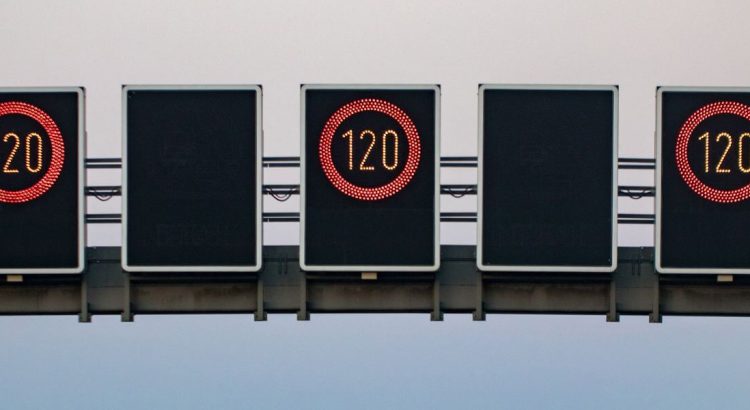Variable message signs (VMS) are becoming increasingly common on roads.
These electronic panels provide real-time information on traffic, road accidents, weather, or temporary restrictions.
More than just technology, they are an essential tool for improving road safety and traffic management.
Understand what they are, how they work, and how to interpret this type of signage.
What Is The Meaning Of Variable Message Signs?
Variable message signage is an electronic panel installed on roads that allows messages to be transmitted according to current conditions.
Unlike fixed signage, VMS can be changed depending on traffic, accidents, or road works.
What Are Variable Message Signs Used For?
Variable message signage is used to improve traffic safety and flow.
After seeing the variable message sign, drivers can make safer decisions, such as reducing speed, changing lanes, or taking an alternative route.
On the other hand, they can indicate that drivers are entering a road under construction and that, therefore, there will be temporary signage in place.
What Is The Purpose Of Variable Message Signs?
In short, these signs allow you to:
- Alert drivers to traffic congestion or accidents;
- Inform drivers about roadworks or detours;
- Indicate adverse weather conditions;
- Reinforce speed limits;
- Among other things.
What Are The Different Types Of Variable Message Signs?
Variable message signs can take different forms, depending on the technology and purpose.
The main types of VMS are:
1. Text
These display only written messages, such as “Accident ahead” or “Traffic restricted.”
They are simple but effective for conveying information directly to the driver.
2. Symbols
These reproduce pictograms recognized by the Highway Code, such as slippery road warning, speed limit, or lane closure.
They facilitate quick reading, even at high speeds.
3. Combined VMS
These combine text and symbols on the same panel.
This type is widely used on highways because it reinforces the message and avoids confusion.
4. Multi-line
These have several lines of text, which allows for more detailed messages, such as the estimated time to a particular exit or adverse weather conditions in a specific area.
![]()
What Is EN 12966?
It is the European standard that defines the technical requirements for variable message signs.
This standard ensures that signage meets criteria for visibility, legibility, resistance, and reliability in different weather conditions.
What Do The Classes L, R, B, T, WL, C, And P In EN 12966 Mean?
EN 12966 uses several classes to classify VMS:
| Class | Meaning |
| L | Panel luminance/brightness |
| R | Luminance ratio |
| B | Beam width |
| T | Temperature |
| WL | Wind loads |
| C | Color |
| P | Protection |
Is Variable Message Signage Mandatory On Highways?
It depends on the legislation of each country. However, in most cases it is not mandatory on all sections, only, for example, in tunnels, bridges, and critical areas.
Where Can Variable Message Signs Be Placed?
Variable message signs can be placed:
- On highways and major routes;
- At tunnel entrances;
- On bridges and urban access roads;
- In critical areas, such as dangerous curves or locations prone to fog.
Where Is Variable Message Signage Used?
In many countries, you can find VMS signs on:
- Highways
- Bridges
- Urban areas
- Complementary routes with heavy traffic.
What Information Do You Find On Variable Message Signs?
Variable message signs can indicate:
- Temporary speed limits;
- Lane closure warnings;
- Danger symbols (e.g., slippery road surface or accident ahead);
- Informative messages such as Traffic restrictions or Accident.
What Can Variable Message Signs Prohibit?
Variable message signs can prohibit:
- Access by certain vehicles (e.g., heavy vehicles in high wind conditions);
- Driving in certain lanes;
- Traffic on sections affected by roadworks or accidents.
Do Variable Message Signs Increase Road Safety?
Yes. European studies show that VMS significantly reduce the likelihood of accidents, especially in foggy conditions, congestion, or roadworks.
What Are The Advantages Of Variable Message Signs?
In short, variable message signage:
- Increases road safety;
- Enables dynamic traffic management;
- Reduces travel times in the event of congestion;
- Alerts drivers to immediate risks;
- Improves emergency response.
What Happens If You Ignore Variable Message Signs?
Ignoring this type of signage is considered a traffic violation, just like any other traffic sign.
These signs transmit real-time information, often related to accidents, roadworks, or adverse conditions, so disregarding them significantly increases the likelihood of an accident.
Want more tips on the automotive world? Visit our Facebook page and follow the content we share daily.


